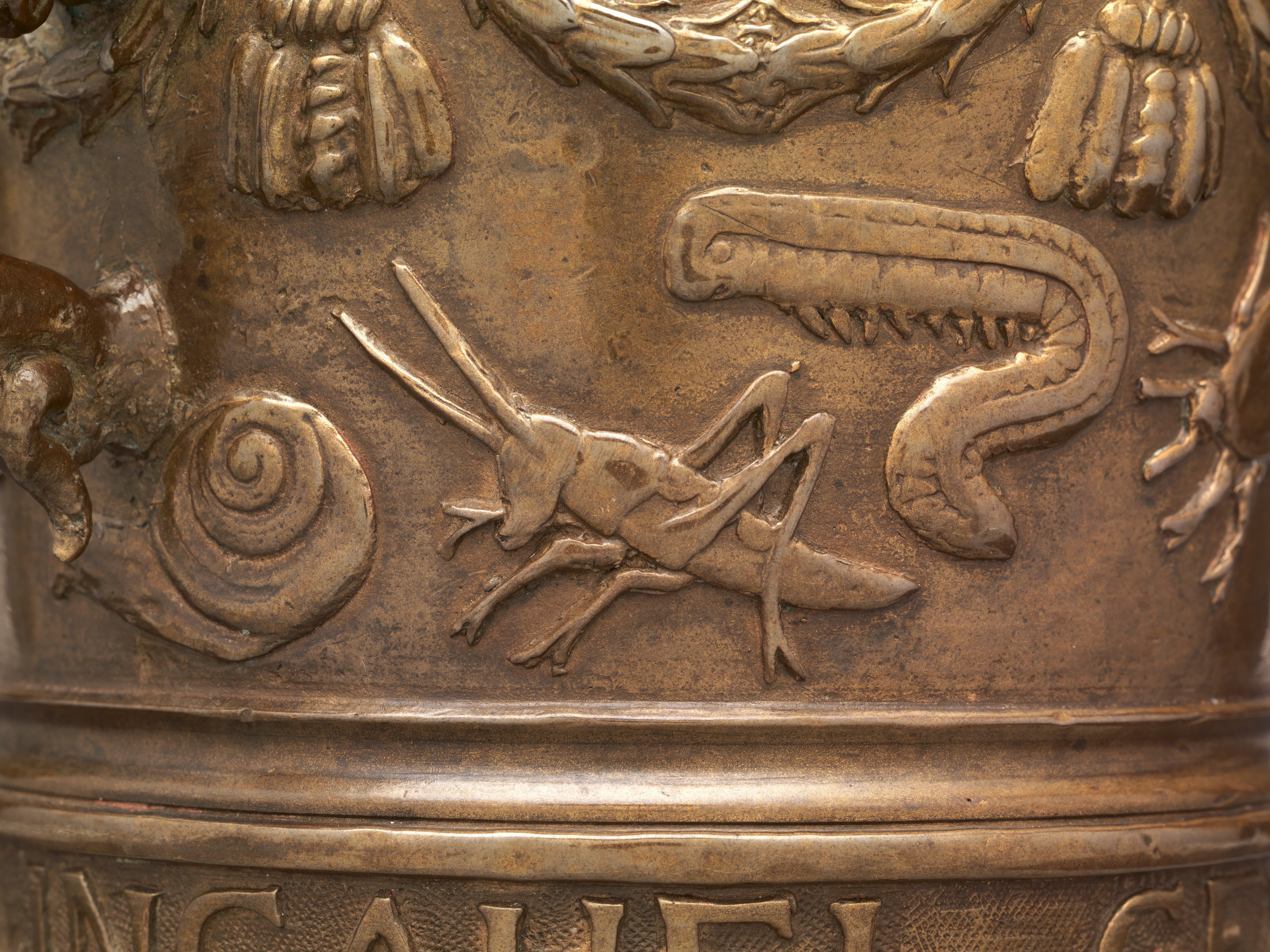Mortar with Animal Frieze
Modeled by Caspar Gras Austrian
Probably cast by Henrich Reinhart
Mortars were used in daily life in domestic settings to grind seeds, grains, spices and herbs as well as numerous ingredients for cooking, and simple medicines and cosmetics. The sculptor Caspar Gras (1585–1674) worked for the Innsbruck Habsburg court from 1613 to 1632. Through his training with Hubert Gerhard, himself student of Giambologna in Florence. Gras became one of the artists who was instrumental in the transmission of Giambologna’s style to the Northern Europe. Dated "1603" this mortar is the sculptor’s earliest work presently known.
Due to rights restrictions, this image cannot be enlarged, viewed at full screen, or downloaded.
This artwork is meant to be viewed from right to left. Scroll left to view more.




